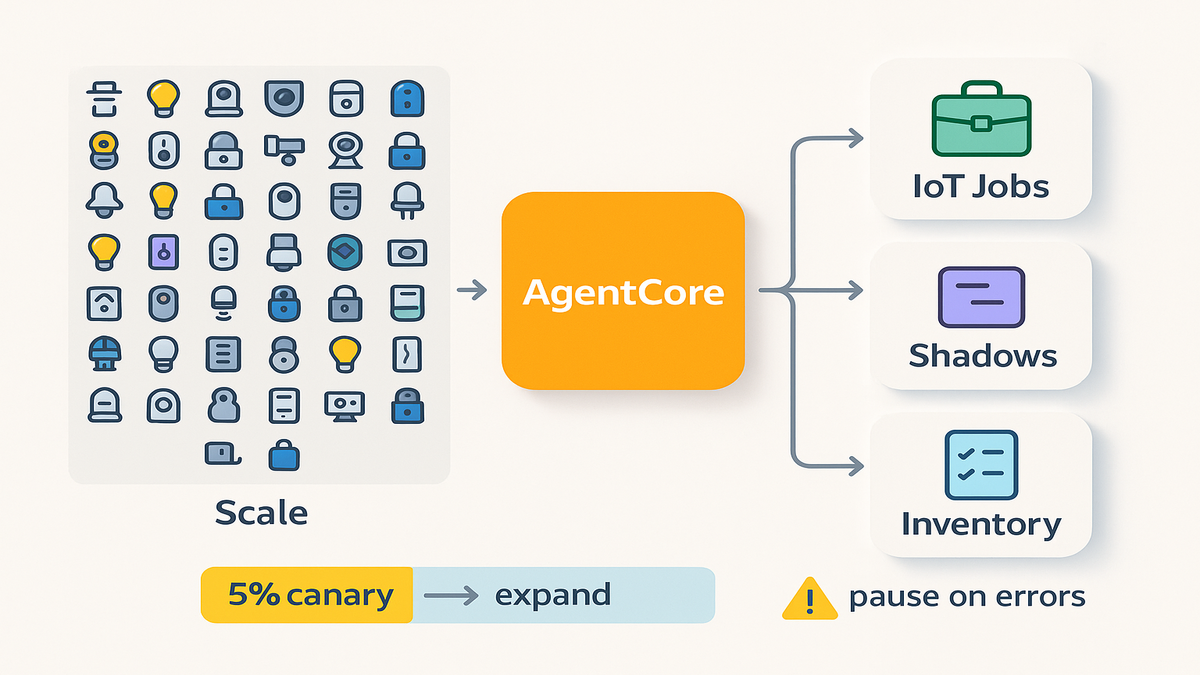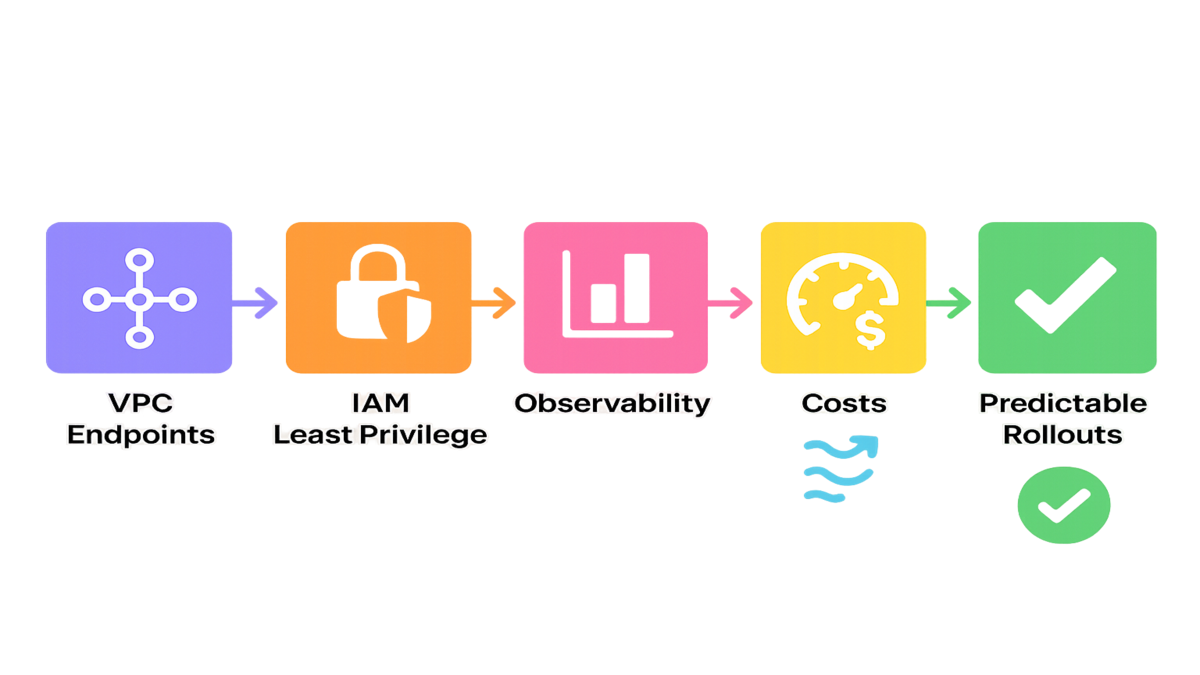
Build Scalable IoT Device Agents with Amazon Bedrock AgentCore

Build a production-ready IoT device management agent with Amazon Bedrock AgentCore and AWS IoT primitives.
Key outcomes
- Safer rollouts using canaries and waves, with auto pause or rollback if errors spike.
- Natural language intents map to tool calls, like IoT Jobs, Shadows, and inventory checks.
- Strong governance with approvals for big scope, auditable choices, and strict tool contracts.

Core architecture
- Reasoning: Bedrock AgentCore plans steps and calls the tools when needed.
- Tools (via Lambda):
- CreateFirmwareRollout: starts IoT Jobs with a wave plan, concurrency, and abort thresholds.
- GetFleetInventory: queries device groups and device health across your fleet.
- GetDeviceShadow / UpdateDeviceShadow: read before write with etag checks for safety.
- Knowledge base (optional): SOPs and compatibility matrices to guide safe actions.
- Observability: CloudWatch logs and metrics, plus CloudTrail audit of key events.
Guardrails
- Default to a 5% canary, expand only if errors stay under the threshold.
- Reject empty target groups and firmware that does not match devices.
- Dry run mode for plan preview, approvals above device count or multi-region limits.
Security and networking
- Least privilege IAM with separate roles for the agent and tools, tag-scoped IoT permissions.
- Private access over VPC interface endpoints for Bedrock and Lambda services.
- Encrypt artifacts and secrets with KMS, and use signed URLs for firmware.
Operations and observability
- Metrics: success or failure per wave, retries, and online or offline device mix.
- Logs: reasoning notes and tool I/O with secrets scrubbed, correlate by request IDs.
- Dashboards: wave progress, top error reasons, and ETA, with alerts on threshold breaches.

Cost notes
- You pay for Bedrock model use, Lambda calls, and IoT Core or Jobs traffic.
- Optimize by picking the smallest reliable model, capping steps, batching inventory queries, and caching snapshots.
9-step launch plan
1) Define the top tasks: rollout, rollback, audit, inventory query, and config update. 2) Write a crisp system prompt with canary-first policy, thresholds, and approvals. 3) Implement strict, versioned tool schemas. Always return structured results. 4) Add a dry run. Require a plan summary before any run. 5) Load SOPs and compatibility data into the knowledge base. 6) Lock down IAM. Enable CloudWatch and CloudTrail. 7) Use VPC endpoints. Keep traffic private. 8) Start with a small canary group. Expand in waves based on live metrics. 9) Track costs and agent steps. Right-size the model and the retry plan.
Result: predictable rollouts, fewer 3 a.m. incidents, and auditable choices without rewriting your IoT stack.

